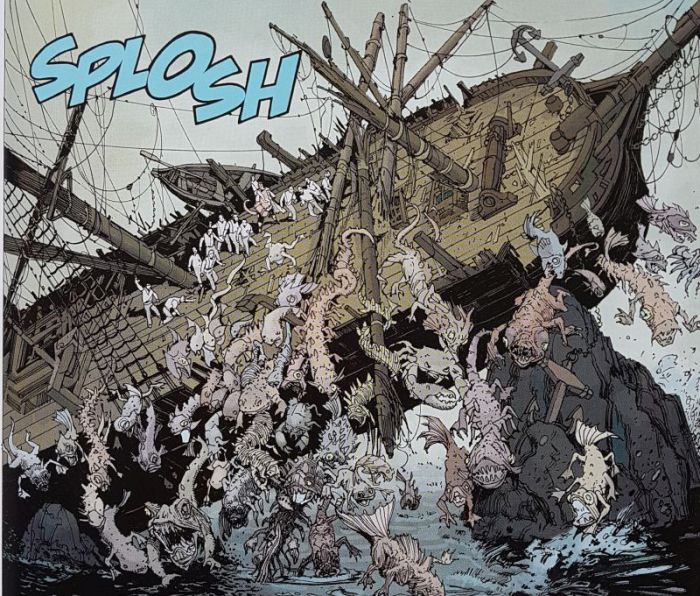It is a real treat when a Polish publisher is preparing a foreign album that is hard to find on the original market. This is the case with Hellboy . The main series ended, but it was not an obstacle for Egmont to compose an additional volume with stories previously unpublished in Poland.
OK, I must admit it right away: I read Hellboy once, still in old editions. So I never got to the end of its story. I promised myself to buy the new black edition of Egmont… and never did. So Hellboy Tales is my first contact with a hero in years. I’m probably missing something like that, although this item has no number and collects stories from different periods (both the publication and the protagonist’s life), so it is possible that there will be more people with an approach similar to my one.

Tales from the hell frontier
The anthology can be divided into three parts. The first, Circus at Midnight , tells about the childhood years of a boy from hell. As part of a rebellion, he secretly breaks out of the BPRD headquarters and follows a demonic circus. This story is especially worth remembering thanks to the smooth changes in the graphic style of the artist Duncan Fegredo – from the typical economy of resources and angularity à la Mignola, to dreamlike circus scenes with much more detail and visual splendor. The script very efficiently combines themes from Pinocchio and Some Monster Comes Here by Ray Bradbury.
In addition, the album includes the story of On a Quiet Depth , in which a mysterious ship appears, its crew is a cult and underwater monsters. Such a peculiar review of the leitmotifs typical of this universe. It is nice, but apart from dozens of dark monsters, not much is remembered here.
I leave the best part for last. Hellboy in Mexico is a collection of several shorter stories that took place in the “Lost Year”, the period during which the hero disappeared without a trace in the title country. In a short time (with plenty of alcohol), he managed to create an exorcistic team-up with a bunch of luchadors, play in several movies, get married or finally stand in the Mexican wrestling ring by himself. A lot is happening, intensely, and the Latin pulp iconography harmonizes nicely with the world created by Mignola. As far as I can tell, some of the episodes collected here were published earlier. Nevertheless, Hellboy Tales adds a few new ones so you can see the whole story.

School for talented artists named after Mike Mignola
As befits an anthology, there are plenty of cartoonists. To be precise: six plus a guest appearance (if you can call it that) by Mignola himself in Hellboy versus the Aztec Mummy . The vast majority of artists present a level similar to their maestro. It is full of minimalism, dynamics and expression. You can see how much influence Mignola has on the creators with whom he collaborates in creating his universe. Gary Gianni stands out the most, presenting a more original approach full of sketchy lines. Certainly, the colors of Dave Stewart, which embellish the whole, help to fuse the work of so many different people into one collection.
Hellboy Tales was released in the same format as the previous stories. With the difference that instead of the black cover, a burgundy one appeared. A nice distinguishing feature, but not spoiling the aesthetics of the previous parts. In addition to the standard covers of individual notebooks and concept sketches collected at the end, you can find a very nice addition in the form of Mignola’s own notes, which briefly describe the story behind each of the stories.

To heaven, to hell
Is it a mandatory item? I do not think so. However, it is a collection of very pleasant (or even brilliant, like Hellboy in Mexico ) stories from the hellish universe. Hellboy fans will not let it go anyway, but a less knowledgeable reader should also find a lot of pleasure in reading.

